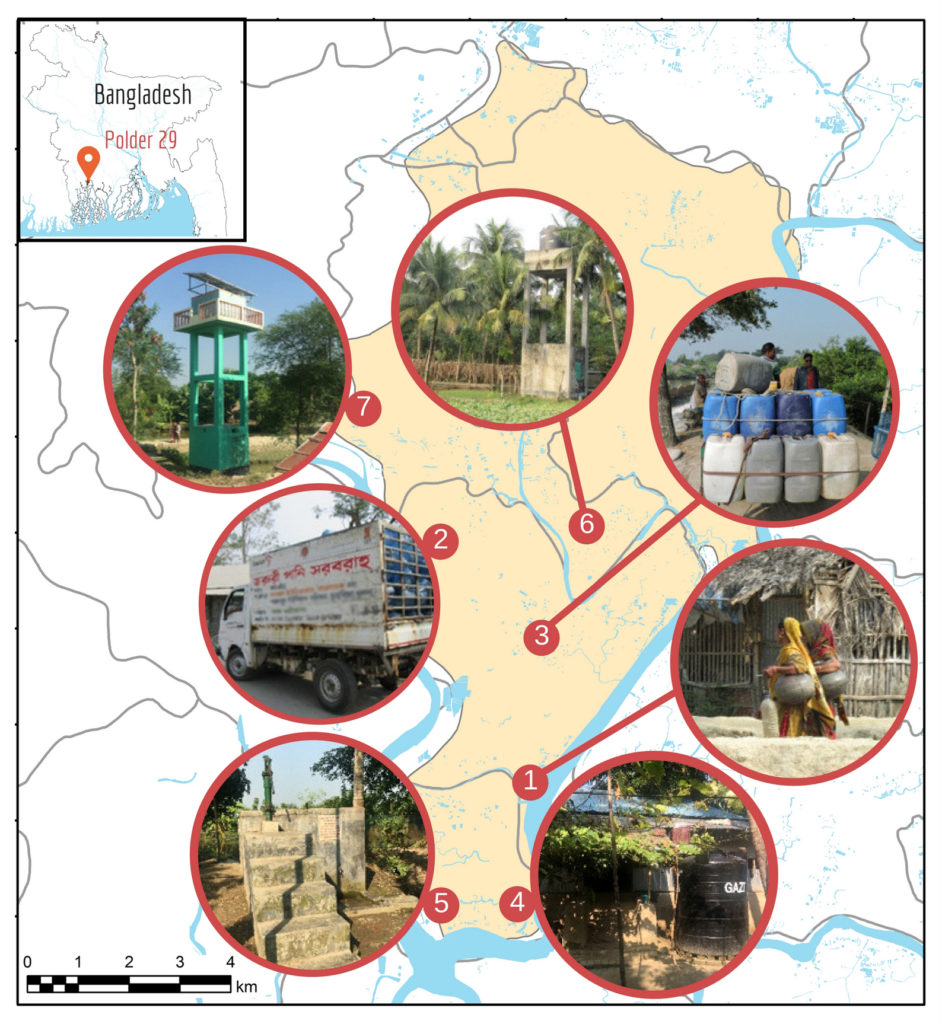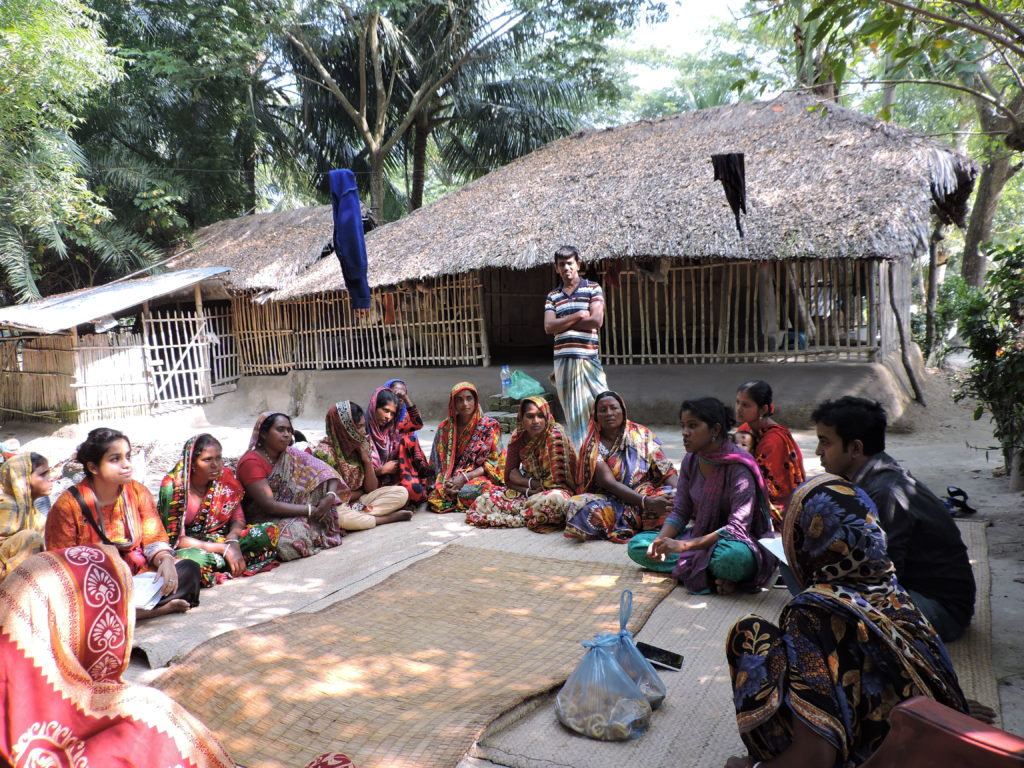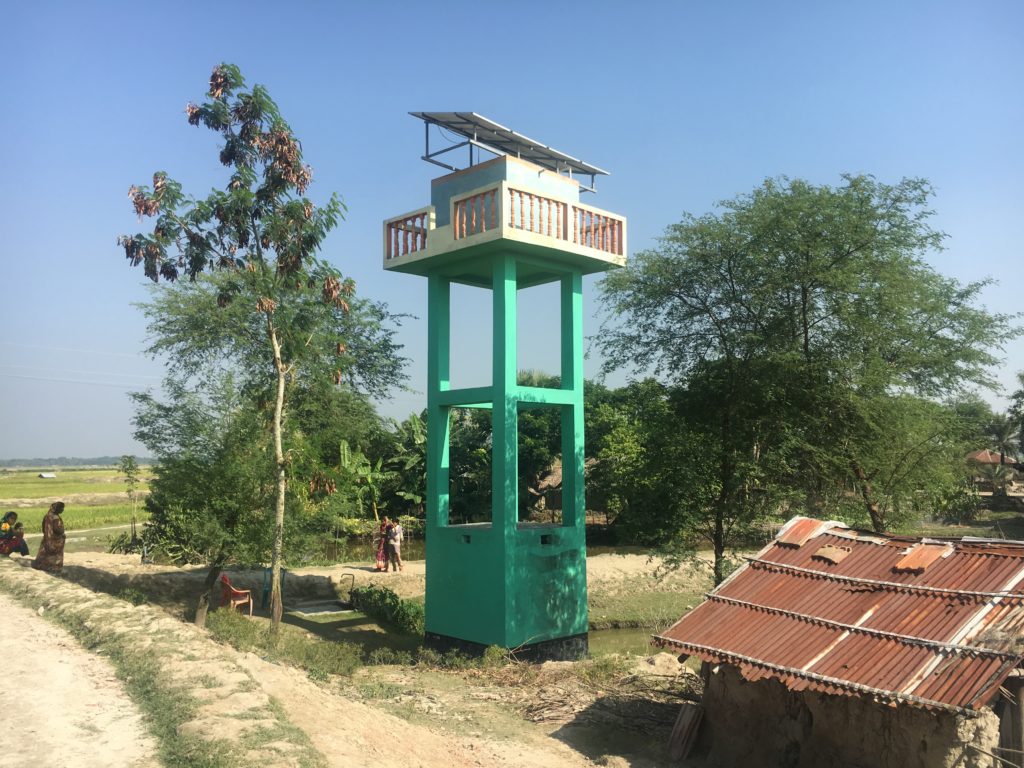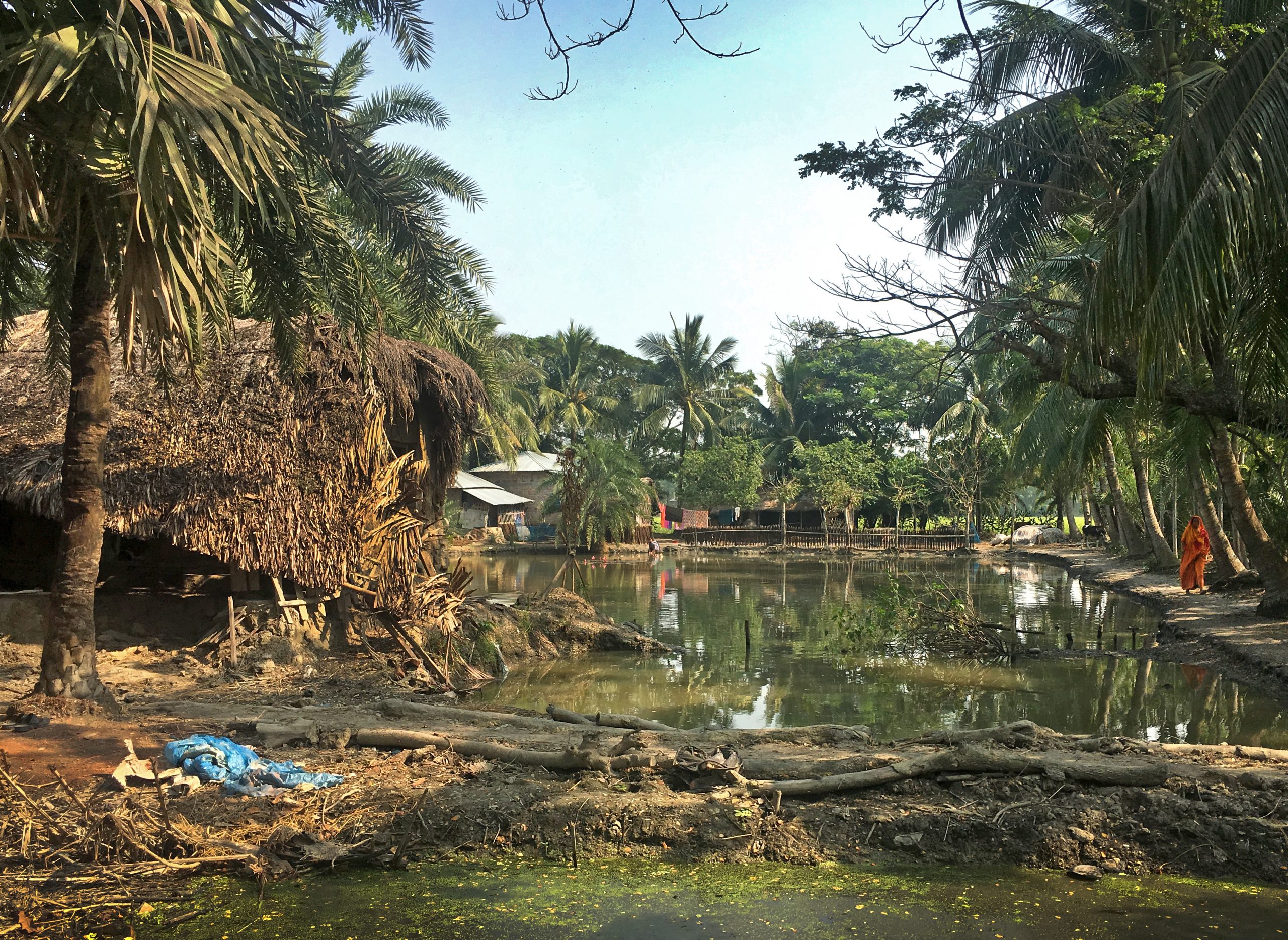Dr Sonia Hoque, Postdoctoral researcher in Water Security and Society
Bangladesh has made impressive progress towards the Millennium Development Goal 7, with access to water for rural populations increasing from 65% in 1990 to 97% in 2015. Much of this progress can be attributed to the millions of handpumps installed by households and communities over the past four decades through private capital investments. This ‘self-supply’ model became predominant in rural Bangladesh as a result of the widespread promotions of groundwater during the 1970-80s as a pathogen free alternative to surface water. Although the landscape of rural Bangladesh is dotted with tubewells, availability of freshwater for drinking and domestic purposes remains a significant challenge in coastal areas due to high levels of salinity.
In November 2017, I visited Polder 29, Khulna District – the REACH ‘coastal risk observatory’ – to conduct focus group discussions with residents of different water-stressed villages, and interviews with representatives of the existing drinking water systems. High rates of riverbank erosion and lack of suitable groundwater aquifers were key concerns for communities in the southern parts of the polder. Loss of agricultural land and flooding due to embankment breaching have pushed households towards extreme poverty. In Chadgar and Jaliakhali villages, women reported walking up to three kilometers every day to collect drinking water from a community tubewell in Sarappur village with comparatively lower salinity levels (#1 on the map).
 The diversity of drinking water supply and services in Polder 29, Khulna District (in light yellow):
The diversity of drinking water supply and services in Polder 29, Khulna District (in light yellow):
1 – Women in Chadgar walk long distances to fetch water from tubewells in neighbouring villages; 2 –Truck sourcing water from a deep borehole and delivering it at Tk. 2.5 per 20-liter container; 3 – Informal vendor selling water at Tk. 25 per 20-litre container; 4 – A 2500 litre tank for storing rainwater; 5 – Pond sand filters, a low-cost alternative in areas without access to freshwater aquifers; 6 – Electricity-powered piped water scheme supplying public taps within 2km-radius at Tk. 30 per month per household 7 – Solar-powered piped water scheme supplying free water through public taps
The water supply situation in these areas was comparatively better until about eight months ago. Since 2014, a water vending project (#2 on the map), co-funded by the local government and an international development organisation, has been supplying drinking water to 350 households in 20 litre containers at a cost of Tk.[1] 70 per month (approximately Tk. 2.5 per container). However, the service ceased in early 2017 when the truck was damaged in an accident. Lack of funds for maintenance and coping with such uncertainties is often a barrier for sustainability of these well-intended projects. The operator mentioned that tariffs were too low to recover the operational costs; however, it was challenging to convince people to pay for water in the first place, as this has never been the norm.
 Women in focus group discussion highlighting erosion and salinity as main concerns
Women in focus group discussion highlighting erosion and salinity as main concerns
Ironically, since the accident, many of these households are purchasing drinking water from informal vendors (#3 on the map), who deliver water from the same or nearby sources at a rate of Tk. 25 per 20-litre container. A resident of the area explained that, as people have become used to drinking better quality water, they find it unacceptable to revert to the surface water they have been drinking for generations. Yet poorer households struggle to afford this water, and rely on alternative low-quality sources or bear the physical burden of fetching water from long distances. The situation is better in the wet season, when almost all households harvest rainwater in their roof catchment. However, while wealthier households can purchase large plastic tanks (#4 on the map) for storing rainwater for several months, poorer ones have to rely on earthen containers with limited capacity.
The type of drinking water service intervention is primarily dictated by the hydrogeology of the area and availability of capital for investment. Pond sand filters (PSFs) are considered to be suitable low-cost alternatives in remote areas without access to freshwater aquifers (#5 on the map). Households in Baro Aria, another erosion prone area at the southern tip of the polder, largely depend on a handful of PSFs installed over the past five years. In many cases, PSFs become non-functional after a few years due to lack of proper maintenance of the filter and the pond itself.
In Gajendrapur village, where a suitable freshwater aquifer exists, a small piped water system has been installed in 2014 to supply households within a 2km-radius through 21 public taps (#6 on the map). This donor-funded project, that cost about Tk. 1,000,000, followed the ‘build-operate-transfer’ model, whereby the management was transferred to community members after the project phased out. Water is supplied for an hour each day, with 15 households sharing one tap and each paying Tk. 30 per month. While there is socio-political pressure to extend the coverage to currently unserved areas of the village, the management committee is strongly resisting such expansion as this would jeopardise the sustainability of the system. In the adjacent villages, named Kapalidanga and Dighalia, where the aquifer is considerably larger, solar-powered piped systems have been installed through similar funding sources (#7 on the map). There are no regular operation costs, and the water is supplied for free, often leading to misuse and wastage. As explained by one resident, “Free resources are undervalued!”
 Solar powered piped water systems supplying free drinking water to areas where deep tubewells have been unsuccessful
Solar powered piped water systems supplying free drinking water to areas where deep tubewells have been unsuccessful
The diversity of drinking water services within a single polder, resulting from a combination of hydro-climatic, socio-economic, institutional and infrastructural factors, reflect the heterogeneous risks and experiences of water security. While on paper there is almost universal access to improved drinking water services in these communities, ensuring safe, acceptable, and affordable drinking water for all requires identification of risks and targeted allocation of resources. Through interdisciplinary and transformative research, the REACH programme aims to identify the priorities of the poor and marginalised, with a view to support national policy and practice towards the Sustainable Development Goals 2030.
[1] US$ 1 = Tk. 80

